Inovonics EN1752 Handleiding
Bekijk gratis de handleiding van Inovonics EN1752 (2 pagina’s), behorend tot de categorie Detector. Deze gids werd als nuttig beoordeeld door 57 mensen en kreeg gemiddeld 4.5 sterren uit 29 reviews. Heb je een vraag over Inovonics EN1752 of wil je andere gebruikers van dit product iets vragen? Stel een vraag
Pagina 1/2

11.24.20 357-00044-01 Rev A © Inovonics, 2020 - www.inovonics.com
EN1752 Temperature Detector
Installation Instructions
1 Overview
The Inovonics EN1752 temperature detector easily adds temperature
monitoring into an Inovonics system with no third-party hardware
integration. The EN1752 is configured with high and low set points of 80°F
and 40°F. Users can customize the EN1752 to monitor temperature in a
variety of applications including server rooms, storage areas, refrigerators,
freezers and pipes for pre-freeze warnings.
1.1 Inovonics Contact Information
If you have any problems with this procedure, contact Inovonics Wireless
technical services:
• E-mail: support@inovonics.com
• Phone: (800) 782-2709
1.2 Temperature Detector Internal Components
Figure 1 Temperature detector internal components
2 Installation and Startup
2.1 Installation Notes
• These products are designed to be installed and maintained by
professional security technicians.
• Products are intended for indoor use.
• Manually test all products weekly.
2.2 Install the Battery
1. Pry the top lip of the mounting bracket up, and lift the bracket off of the
transmitter.
2. Use your thumb to depress the housing release tab on the bottom of the
transmitter; separate the housing.
3. Install the new battery.
4. Press the reset button to initialize the transmitter.
2.3 Mount the Honeywell T280R Wireless Temperature
Sensor Probe
For applications requiring an external probe, the EN1752 temperature
detector is compatible with the Honeywell T280R wireless temperature
sensor probe. If you are using the EN1752 temperature detector for
ambient temperature monitoring, skip to 2.4, “Select the Frequency Band”;
if you are using the Honeywell T280R wireless temperature sensor probe:
1. Trim the T280R wireless temperature sensor probe wiring to the
desired length.
Note: The T280R wireless temperature sensor probe wiring is 15 feet,
untrimmed. This is the maximum length that can be used with this product.
Do not add extension wire.
2. Route the T280R wireless temperature sensor probe wiring through
either the rectangular back wiring cutouts on the back of the housing
and bracket, or through the rounded top wiring cutout at the top of the
housing.
Note: If you want to use the cutout at the top of the housing, you will need
to trim the bracket.
3. Use a small screwdriver to attach the T280R wireless temperature
sensor probe wiring leads to the power terminal block.
4. Refer to the T280R wireless temperature sensor probe instructions for
additional details.
5. Press the reset button to complete configuration.
2.4 Select the Frequency Band
EchoStream products are able to use a range of radio frequencies, and is
shipped from Inovonics set for your geographic area.
• The jumper will be set on the two pins marked NZ to set the frequency
range to 921-928 MHz for New Zealand.
• The jumper will be set on the two pins marked AU to set the frequency
range to 915-928 MHz for Australia.
• The jumper will be removed to set the frequency band to 902-928
MHz for North America.
1. Ensure the frequency band is set for your geographic are.
2. If the frequency band is not set for your geographic area, place a
selection jumper on the appropriate frequency band selection pins to
select Australia or New Zealand, or remove it for North America.
3. If you have changed the frequency band, press the reset button to
complete configuration.
Caution: When pressing the reset button, make sure you don’t also touch
the frequency band selection pins. Touching the frequency band selection
pins while pressing the reset button can inadvertently set the single input
universal transmitter to the wrong frequency band.
2.5 Program the EN1752 Temperature Detector
The EN1752 temperature detector ships configured for ambient
temperature monitoring without the use of an external probe, with a 80°F
high and 40°F low temperature threshold, and with a one minute check-in
time frequency. If you are using these default settings, skip to 2.6, “Register
the EN1752 Temperature Detector”; if you need to modify these settings:
Note: Please contact your Inovonics account representative if you require
ten or more transmitters with the same modified settings.
Note: To program the EN1752 temperature detector you will need an
ACC17XX programming cable, available from Inovonics. This will allow you
to change the transmission interval, temperature measurement interval
and/or the temperature unit parameters.
4. Use a PC running Windows 10 or higher to download the EN1752
programmer app from the EN1752 product page at inovonics.com.
5. Open the EN1752 temperature detector programmer app.
6. Connect the programming header end of the ACC17XX programming
cable to the EN1752 temperature detector programming header pins.
• To ensure a proper connection, line up the arrow on programming
header end of the ACC17XX programming cable with programming
header pin 1, shown in figure 1.
7. Connect the USB end of the ACC17XX programming cable to the PC.
For product and installation videos visit us at
www.inovonics.com/videos or use the QR
code below.
ATerminal block BReset button
CFrequency band selection
pins
DProgramming header (pin one
furthest left)
B
D
C
A

11.24.20 357-00044-01 Rev A © Inovonics, 2020 - www.inovonics.com 2
• Once connected, the input fields will reflect the factory defaults.
Temperature will reflect the current temperature per the EN1752
temperature detector’s internal thermistor.
8. If you will be using an external temperature sensor probe, select Probe
in the programming app.
• Once probe is selected, the temperature will reflect the temperature of
the probe.
9. Edit temperature thresholds and reporting intervals as desired.
10. Click Update Transmitter to program the new settings to the EN1752
temperature detector.
11. Disconnect the ACC17XX programming cable.
12. Press the reset button on the transmitter.
13. Repeat steps 6 to 12 as needed for additional EN1752 temperature
detectors.
2.6 Register the EN1752 Temperature Detector
The EN1752 temperature detector must be registered with the system in
order to be monitored and supervised. Refer to the receiver installation
instructions for details on registering a transmitter.
14. When prompted by the receiver to reset transmitter, press the reset
button.
15. Replace the cover.
2.7 Mount the EN1752 Temperature Detector
16. Attach the mounting bracket to the desired location, using the included
screws or double-sided tape.
Note: There are two mounting holes for standard installation. An optional
third mounting hole is located under the battery. Use the third mounting
hole to secure the housing to the bracket.
17. Hook the bottom of the EN1752 temperature detector into the bracket’s
bottom catch, and press the EN1752 into the bracket so that the
bracket’s top lip snaps into place.
3 Operation
Alarm 1 is sent when the EN1752 temperature detector reaches the high
temperature threshold; alarm 2 is sent when it reaches the low temperature
threshold. The tamper alarm is sent when the ambient transmitter
temperature is above 140°F or below -4°F.
4 Specifications
Dimensions: 3.5” x 1.7” x 0.9”.
Battery type (BAT604): Panasonic CR123A or equivalent.
Battery life: 3 to 5 years.
Operating temperature: -4° to 140°F.
Humidity: 0 to 90%, non-condensing.
Regulatory compliance: FCC; RoHs compliant; Industry Canada; RCM.
Note: The transmitter output power level is the same for North America,
Australia and New Zealand.
Note: Inovonics supports recycling and reuse whenever possible. Please
recycle these parts using a certified electronics recycler.
Note: Specifications and data are subject to change without notice.
Caution: Changes or modifications not expressly approved by Inovonics
could void your authority to operate the equipment.
5 Television and Radio Interference
This equipment has been tested and found to comply with the limits for a
Class B digital device, pursuant to Part 15 of the FCC Rules. These limits
are designed to provide reasonable protection against harmful interference
in a residential installation. This equipment generates, uses and can
radiate radio frequency energy and, if not installed and used in accordance
with the instructions, may cause harmful interference to radio
communications. However, there is no guarantee that interference will not
occur in a particular installation. If this equipment does cause harmful
interference to radio or television reception, which can be determined by
turning the equipment off and on, the user is encouraged to try to correct
the interference by one or more of the following measures:
• Reorient or relocate the receiving antenna.
• Increase the separation between the equipment and receiver.
• Connect the equipment into an outlet on a circuit different from that to
which the receiver is connected.
• Consult the dealer or an experienced radio/TV technician for help.
6 FCC Part 15 and Innovation, Science and
Economic Development Canada (ISED)
Compliance
This device complies with part 15 of the FCC Rules, and ISED license-
exempt RSS standard(s). Operation is subject to the following two
conditions: (1) this device may not cause interference, and (2) this device
must accept any interference that may cause undesired operation of the
device.
Le présent appareil est conforme aux CNR Innovation, Sciences et
Développement économique Canada applicables aux appareils radio
exempts de licence. L'exploitation est autorisée aux deux conditions
suivantes: (1) l'appareil ne doit pas produire de brouillage, et (2) l'utilisateur
de l'appareil doit accepter tout brouillage radioélectrique subi, même si le
brouillage est susceptible d'en compromettre le fonctionnement.
7 Radiation Exposure Limits
7.1 FCC
This equipment complies with FCC radiation exposure limits set forth for an
uncontrolled environment. In order to avoid the possibility of exceeding the
FCC radio frequency exposure limits, human proximity to the antenna shall
not be less than 20 cm during normal operation and must not be co-located
or operating in conjunction with any other antenna or transmitter.
7.2 ISED
This equipment complies with ISED RSS-102 radiation exposure limits set
forth for an uncontrolled environment. This transmitter must be installed to
provide a separation distance of at least 20 cm from all persons and must
not be co-located or operating in conjunction with any other antenna or
transmitter.
Cet équipement est conforme avec ISED RSS-102 des limites d'exposition
aux rayonnements définies pour un environnement non contrôlé. Cet
émetteur doit être installé à au moins 20 cm de toute personne et ne doit
pas être colocalisé ou fonctionner en association avec une autre antenne
ou émetteur.
Product specificaties
| Merk: | Inovonics |
| Categorie: | Detector |
| Model: | EN1752 |
| Kleur van het product: | Wit |
| Gewicht: | 54 g |
| Breedte: | 43 mm |
| Diepte: | 23 mm |
| Hoogte: | 89 mm |
| Stroombron: | Batterij/Accu |
| Connectiviteitstechnologie: | Draadloos |
| Montagewijze: | Inbouw |
| Levensduur batterij/accu: | 8 jaar |
| Ondersteund aantal accu's/batterijen: | 1 |
| Duurzaamheidscertificaten: | Federal Communications Commission (FCC), RoHS |
| Aantal: | 1 |
| Detector type: | Vaste temperatuur hitte detector |
| Koppelbaar: | Nee |
| Compatibele batterij grootte: | CR123A |
| Bedrijfstemperatuur (T-T): | -20 - 60 °C |
| Relatieve vochtigheid in bedrijf (V-V): | 0 - 95 procent |
Heb je hulp nodig?
Als je hulp nodig hebt met Inovonics EN1752 stel dan hieronder een vraag en andere gebruikers zullen je antwoorden
Handleiding Detector Inovonics

4 Juli 2023

28 Juni 2023
Handleiding Detector
- X-Sense
- Kreator
- Maginon
- PCE Instruments
- Garmin
- Iget
- Brennenstuhl
- Homematic IP
- BeeSecure
- Fisher
- Testo
- Nexa
- Garrett
- Vimar
- Bosch
Nieuwste handleidingen voor Detector
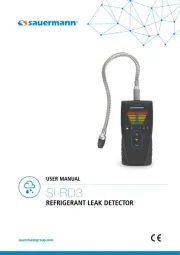
1 September 2025

20 Augustus 2025
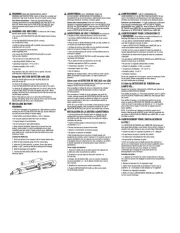
18 Augustus 2025
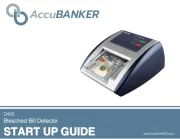
12 Augustus 2025
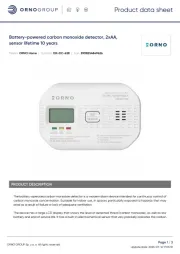
11 Augustus 2025
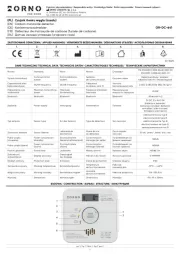
11 Augustus 2025
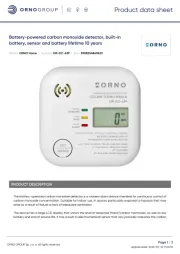
11 Augustus 2025
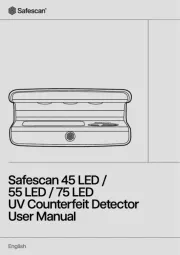
8 Augustus 2025
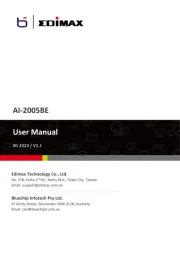
28 Juli 2025
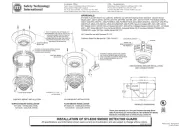
24 Juli 2025